Understanding Labrador body language is a fascinating aspect of the unique bond shared between you and your pet. Though we cannot converse verbally with our Labradors, a silent yet profound dialogue is perpetually exchanged through the nuances of body language.
To read your Labrador’s body language, pay attention to everything he does, from his nose to his tail. Dogs interact with you and tell you their emotions using their tail, including wag speed and direction, ear positions, eyes, face, tongue, legs, and body posture.
From the intent gaze of your dog to the subtle positioning of their ears, the tucking of the tail, or even a simple yawn – each gesture holds a wealth of information.
Deciphering these silent signals is key to comprehending and nurturing the relationship with your Labrador. But what do these canine cues really mean?
Let’s delve into the world of Labrador body language and unlock the secrets of their non-verbal communication.
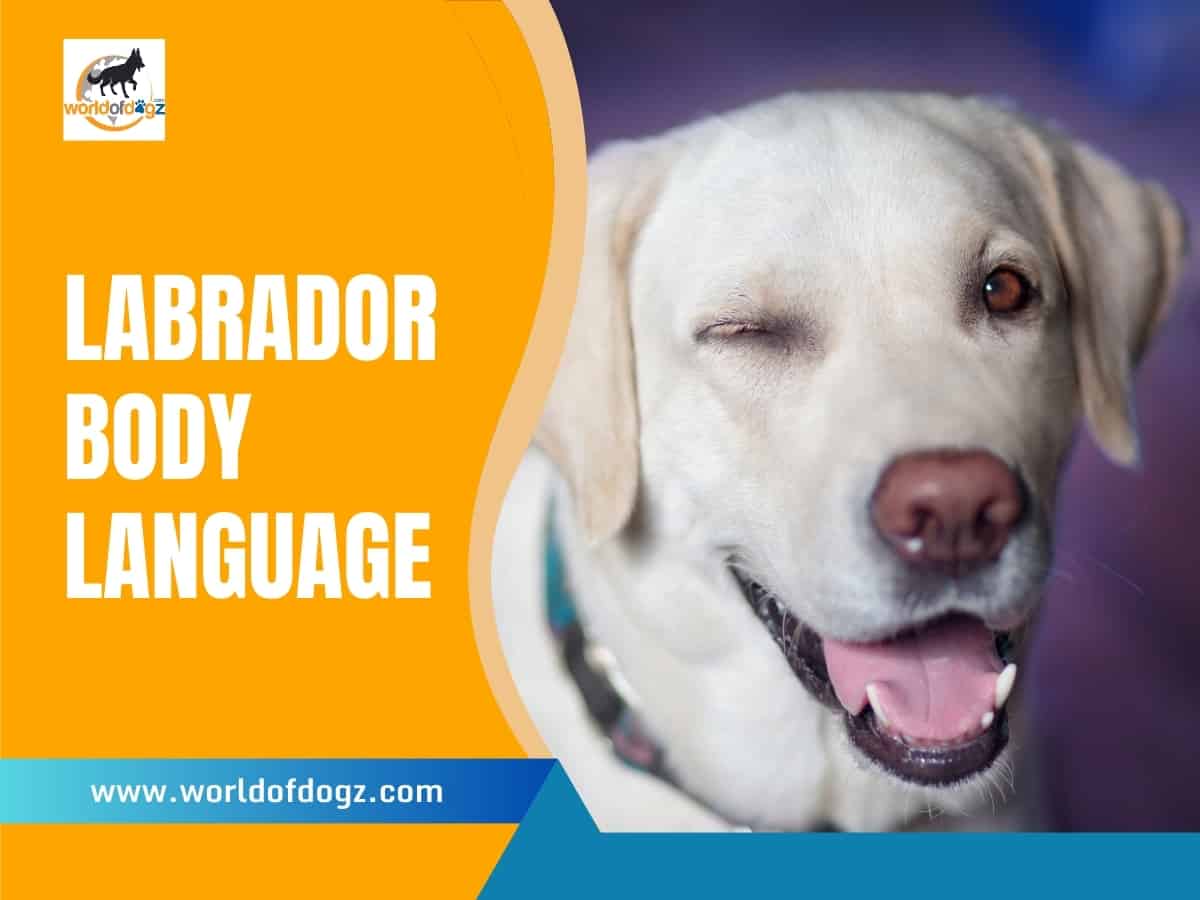
How Do Labradors Communicate?
Are you having trouble communicating with your Labrador or reading his body language?
Many efforts have been made to close the communication gap between humans and dogs, but none have succeeded outside of tone and body language.
Labradors communicate using visual, olfactory (smell), acoustic (sound), and tactile (touch) signals.
A wagging tail, barking, intense gazing, avoidant eyes, panting, forward or backward-tilted ears, different postures, and pawing are all examples of Labrador communication.
Learn How to Communicate With Your Dog From This YouTube Video…
Fortunately, Labradors can read your body language just as well as you can read theirs.
They are intelligent dogs who can understand your intent if you show them how you feel by physical gestures, but they can also hear the volume and tone of your voice.
When you yell, they can tell you’re upset. If you talk in an excited voice, they will be happy. Communication is crucial when you’re trying to develop a relationship with your Labrador.
Amazingly, your dog can even sense your feelings! A recent study of Labrador and Golden Retrievers found that they can use their sense of smell to understand their owner’s emotions and mood.
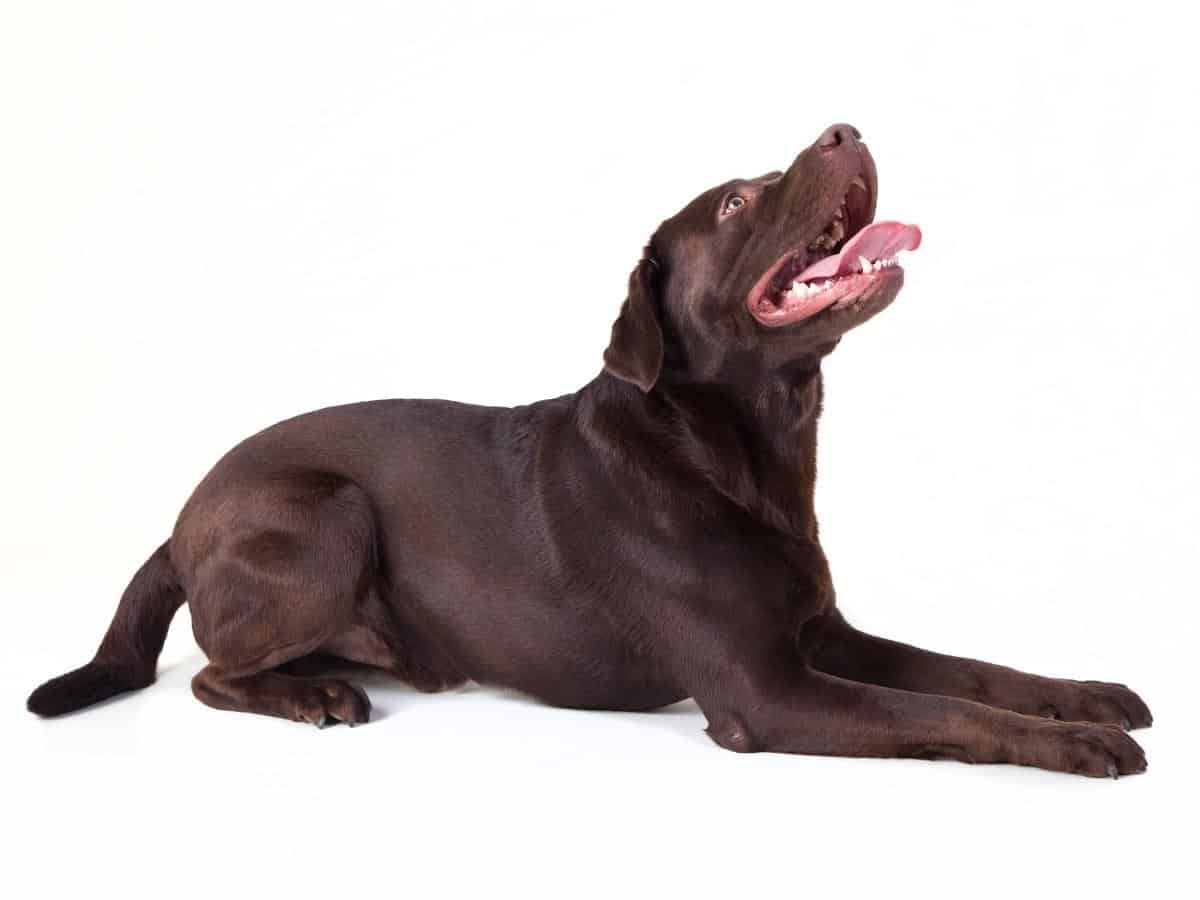
Labrador Body Language
Since your Labrador cannot communicate with you verbally (other than barking), he must rely on body language to convey his message.
You’ll learn all of your Lab’s body language, but it’s also essential to understand how unfamiliar dogs communicate.
You must also look at the situation’s context and your dog’s environment, but don’t worry; you’ll soon pick it up.
Understanding your dog’s body language helps you understand his emotions, which ultimately helps you train them better.
Let’s example the different ways that your Lab might try to tell you something:
Eye Communication
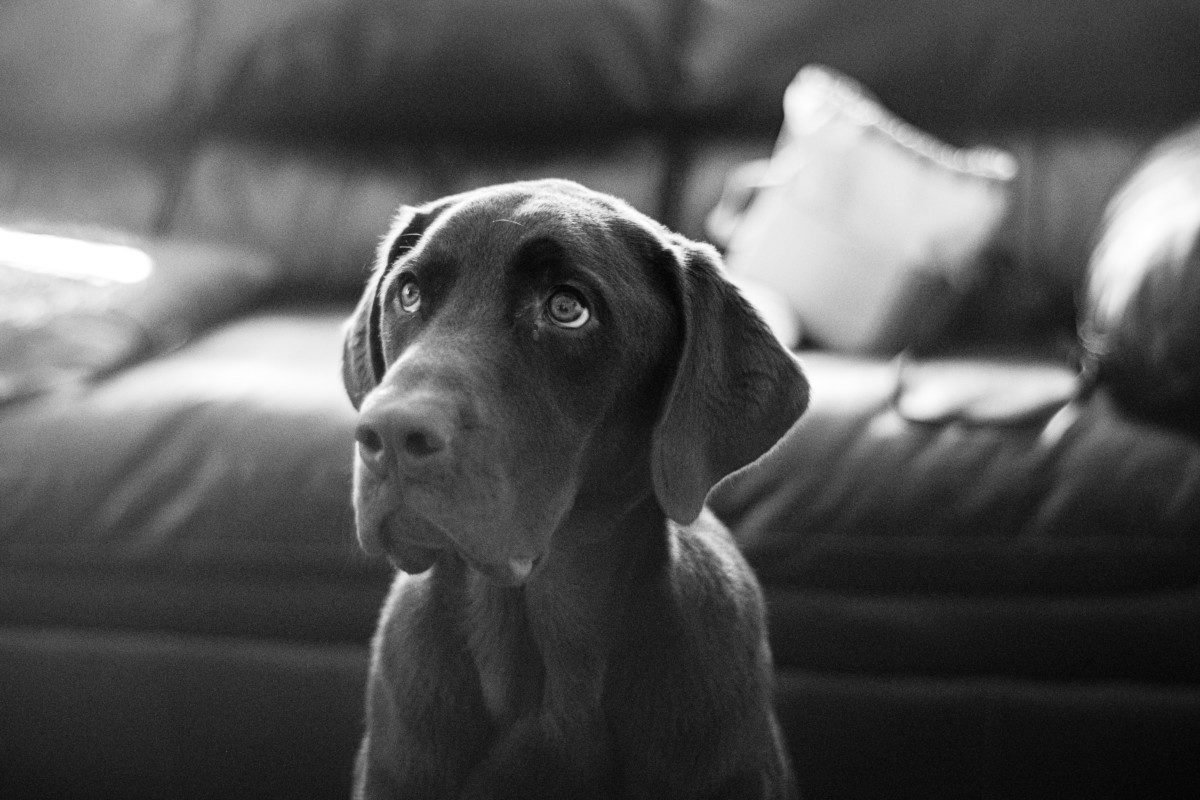
- Looking away from you is a tell-tale sign of submissiveness. When you’re attempting to decipher your Labrador’s body language, and he doesn’t look you in the eyes, he’s letting you know you’re in control. It’s not so much a sign of fear as it is a sign of respect and recognition of the respective hierarchy between you.
In most cases, however, your Lab’s avoidant eyes are his version of “I’m not in the mood!” So, if you or another dog is trying to engage him in play and he avoids looking at you, you might as well give up for now. He might even get up and go lie down away from you!
- Intense focus and staring at a single object, human, or animal are potential signs of aggression. While your Labrador’s intense focus might indicate that he is confused by what’s going on, it could also indicate that he will bark or, even worse, bite.
If his pupils are dilated in broad daylight, it signifies an anxious or stressed dog. Also, look at his hair along the shoulders and spine to see whether it is standing up; if that’s the case, slowly back away.
- Strong eye contact can also mean your dog wants attention. If you consider accompanying gestures and put them into context, you can read the difference from the example above.
For instance, if you’re eating some tasty chicken and your Lab is staring at you with shiny half-crossed eyes, he is giving you his best “begging eye” look and is asking for some attention – and some chicken!
- Squinty and Blinking Eyes: Your Labrador may be communicating that he wants your attention, wants to play, or is hungry. However, if you’re in a noisy environment that he doesn’t like, this communication signal may suggest anxiety. Your dog will signal you to take action, order calm, or leave the noisy environment! Again, look at the whole situation to give you some clues.
- Darting eyes may signal doubt. Dashing eyes indicate that your Labrador is unaware or suspicious of his environment. It may be his first time walking in a new place, and he’s assessing the situation to ensure there are no dangers.
- The “half-moon” eye shows that your dog is alert or anxious. If the whites of your Labrador’s eyes are apparent to the side opposite where his head is facing (what is known as “half-moon eye” or “whale eye”), he is alert to noise or movement or is nervous about something happening around him. Your dog’s head will avert slightly, but he will focus his gaze elsewhere.
Ear Positions and Their Meaning
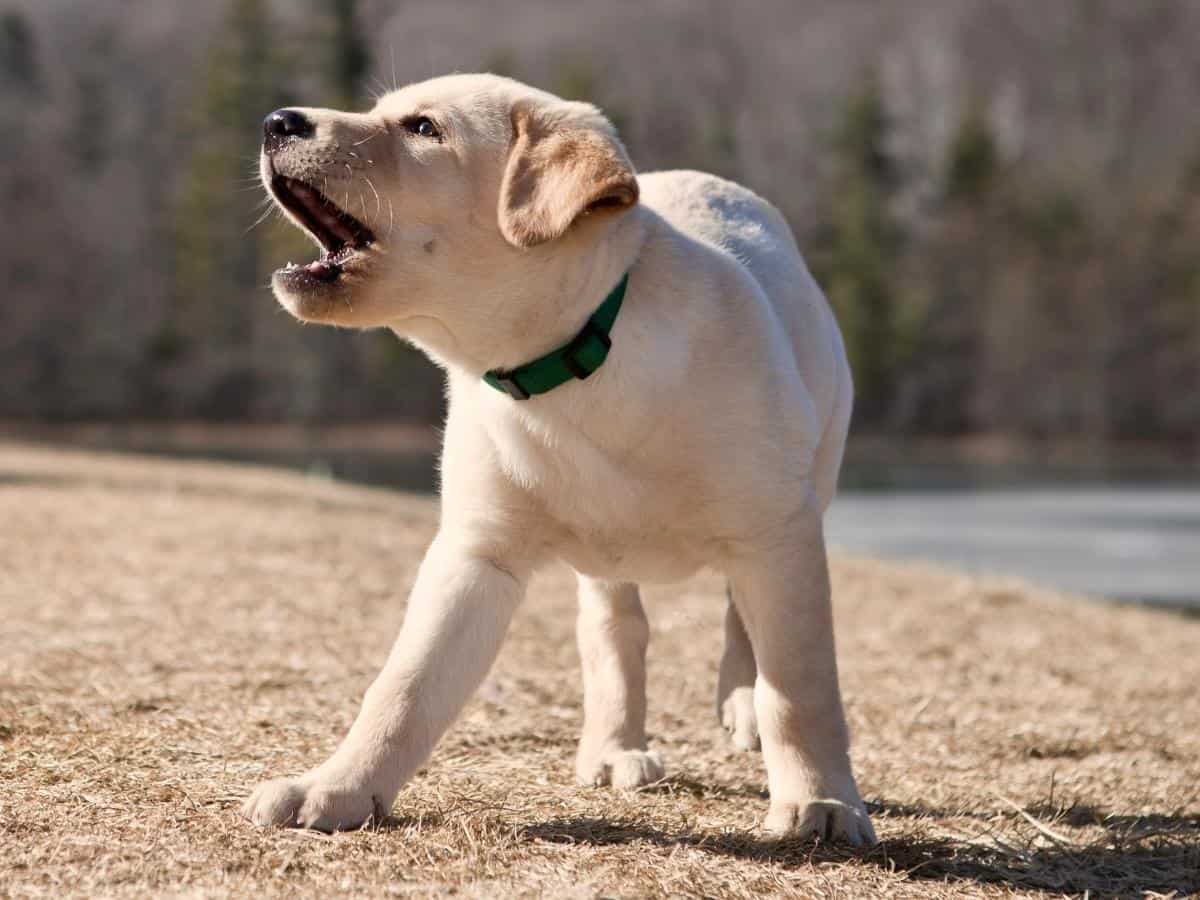
- Flopped back ears are a good sign. This indicates that your Labrador is calm, happy, and friendly. If you notice his ears are back, you’ve created an environment that makes him feel comfortable. Try to maintain this calm atmosphere by avoiding sudden noises that can startle your dog.
- Ears tightly pinned to the head mean your Lab is scared or anxious. Fear or anxiety causes Labradors to put their ears down. You’ll see your dog’s ears flattening and pinned close to the head if he’s afraid of his surroundings, another human or animal, or if he is sick. Cowering, a hunched and tense body, and whimpering are other signals to watch out for.
- Pricked ears can mean your Lab is alert, interested, excited, or curious. To begin with, it might simply indicate that he’s curious about what he is hearing. During periods of play, your Labrador will become excited. It may also signal that he’s on high alert, anxious, or afraid of loud noise or looming danger. Examining his body language and the surrounding environment is the best way to figure out what’s going on.
- Ears constantly tilted in different directions can mean uncertainty. If your Labrador isn’t sure what he hears or where the noise comes from, he’ll turn his ears in different directions. He may be attempting to track another dog, squirrel, or deer but is distracted by moving vehicles or people talking, causing his ears to shift their attention in various directions.
Tail Positions
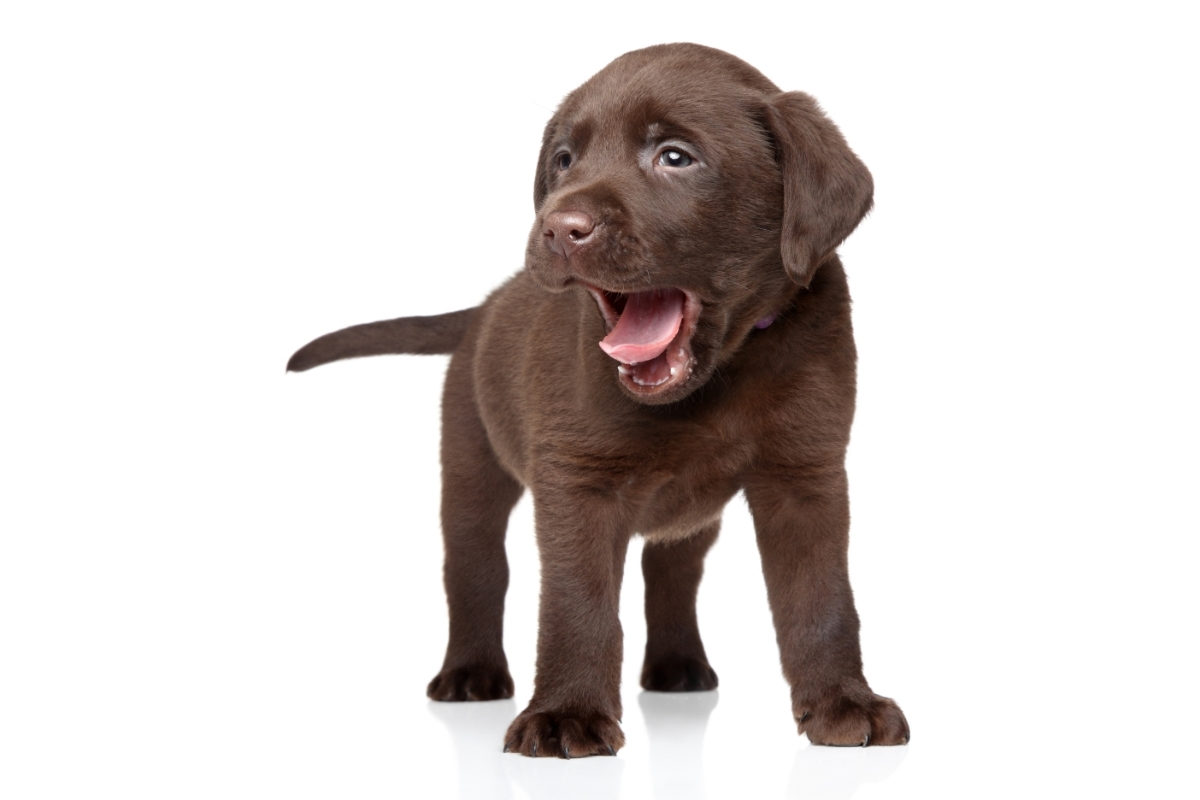
- Slow tail wagging means that your Lab is content and being playful – or it could mean that he is a bit worried about something he heard or saw. You have to interpret it in the context of the situation. A slow wag is less social than other forms of tail-wagging communication, and it normally indicates insecurity if the tail is neither high nor low. In this position, the tail can quickly adapt to changing circumstances. If you’re talking to your Labrador or walking him, he might casually wag his tail slowly.
- Fast tail wagging means that your dog is having an incredibly good time – but it could also mean that he’s worried. This body language is normally the former when you’re playing with your Labrador. If he encounters a new person or sees another dog walking by, he may become anxious. Uneasiness, on the other hand, is normally followed by a rigid, straight tail.
- A tail tucked between the legs is a sign of fear or humiliation. Shaking, panting, and drooling can also be visible when interpreting this canine body language. Your Labrador is unsure about something, and it’s making him nervous. Also, when humiliated, dogs tuck their tails between their legs. You may have seen a dog walking away with his tail between his legs after losing a battle with another dog. As a result, the dog is expressing his fear, loss, and embarrassment.
- Tail positioning is essential, as well, when reading Labrador’s body language. If your Lab’s tail is up, it normally means he’s excited, alert, or displaying signs of dominance. It might be a warning that he’s trying to challenge another dog or animal. A low-hanging tail indicates that he is chilled, while a tail that hangs in the middle indicates that he hasn’t fully committed to his response.
Check Out These Useful Clues To Understand Your Dog Better…
Facial Expressions
- Panting can mean your dog releases heat after exercise or is stressed, fearful, or over-excited. If your dog won’t stop panting, it’s probably because of something he’s scared of or unfamiliar with. Separation anxiety or the arrival of a new visitor may also be to blame. With stress, panting may also be accompanied by drooling. You should also look at the shape of your Lab’s tongue. An out-of-breath dog has a tongue that hangs freely from the mouth, whereas a dog with a spatulate tongue is tense and nervous.
- Yawning can mean a few different things as well. It could just be that your Labrador is tired or bored, but it could also mean he is stressed. Yawning is often associated with submissiveness or fear of harm. Your Lab’s stress-yawning can be exaggerated or accompanied by vocalizations. If he continues to yawn, try to determine what is causing the anxiety.
- Snarling and baring teeth are both signs of aggression. This is one of the most straightforward ways to decipher your Labrador’s body language. While you should feel it necessary to assert your authority, now may not be the time, especially if his hackles are up! Distract him with his favorite toys or treats while speaking in a calm and confident tone, and then initiate your leadership once he has calmed down.
- Licking of the lips and flapping of the tongue could mean that your Lab wants to be left alone. If your Labrador turns away while transmitting these signals, it is likely he doesn’t like to hug or pet right now. It’s not about offending him; instead, striving to honor his wishes. Of course, dog licking as a means of communication is associated with affection when directed to you.
- Big sighs are often followed by stretching, but they are typically only a relief sigh. It’s a little amusing, but your Labrador might sigh when all of your guests have left! He finally feels chilled and doesn’t have to worry about dealing with strangers. Sighing may also indicate that your dog is at ease with his surroundings and feels quite relaxed.
Other Canine Body Language
- If your Labrador is lying on his back and resting, it means that he trusts you. Dogs like sleeping on their backs, but they can only do so if they are confident in their surroundings, as they are quite vulnerable in this position. If your dog is sleeping or resting this way, you should be proud and pleased because he is submissive and knows you are the boss!
- When your dog has his head low to the ground and his back end high, it means he’s in a playful mood. When your Labrador displays this body language, known as the play bow, it’s fun to actually mimic the same behavior to let him know that you’re ready to play along. This is your dog’s way of inviting you to play.
- Leaning on you signals closeness and friendship. When your Labrador makes physical contact with you by cuddling or seemingly hugging you, it’s clear that he is showing affection and friendship. However, a dog who enjoys sitting on your lap might not be expressing friendship. He may attempt to assert his superiority over you; you are his property! This is particularly likely if other pets in the house seem to steal your dog’s attention.
- Pawing is a way to get your attention. When dogs try to play with other dogs, they will paw them. Most people will interpret pawing as a dog welcoming you. Although this could be valid based on how your dog has been trained, pawing has also been linked to attachment experiences during puppyhood.
For example, puppies will use their paws to direct their mother’s teats to their mouth to get milk. In this light, pawing can be interpreted as an attachment trait that your Labrador will continue into adulthood, in which he will extend his paws to an object of interest (a loving owner) rather than one of resistance (a stranger).
- Raised hackled (piloerection) can indicate aggression, fear, defensiveness, arousal, excitement, or a sense of danger. In simplest terms, piloerection is an involuntary reaction similar to human goosebumps. The response makes the hair on your Labrador’s shoulders and along his spine stand on end. It’s another example of your Labrador’s body language that you’ll need to consider what is happening around him.
Read more: Common Labrador behaviors and meanings.
Let’s now look at a couple of examples of your Labrador’s body language and how to read what he is trying to tell you.
Signs Your Labrador Is Happy
Labradors are known for their friendliness and affection. You love your dog dearly, but how do you know if he loves you and is happy?
When your Labrador is happy, he will have a fast wagging tail, look straight at you, relaxed flopped back ears, and have a slightly open mouth and relaxed tongue.
He will be laid back and may perform a play bow or expose his belly by rolling on his back. He may also lean on you or sit on you.
Your dog will be so excited to see you when you come home. It’s no secret that Labradors are medium-large breed dogs.
However, that doesn’t stop him from jumping all over you and trying to cuddle with you! He wants to strengthen his bond with you and show that he is relaxed and happy in your company.
Reasons for Anxiety
Labradors can get anxious if they’re left alone for too long. It’s known as separation anxiety, and they may worry that you’ll never return.
Labs may also be anxious due to being in a strange place or around unfamiliar people, loud noises such as fireworks or thunder, or health conditions or pain.
Here’s how to tell that your Labrador is anxious by looking at his body language:
- Tail tucked between his legs
- Ears pinned back
- Panting, yawning, drooling, licking
- Pacing or shaking
- Half-moon eye
- Tense body
- Hiding or turning his back
- Walking away
Your dog may also engage in unwanted behaviors, such as destructive chewing, nipping, digging, excessive barking, etc.
If your Labrador has behavior problems and you don’t know what to do, check out this article: Labrador Behavior Problems.
Final Thoughts
Body language is very expressive in Labrador Retrievers. They’re smart enough to know how to communicate, but they also display natural behavior in response to various emotions, such as fear, anxiety, excitement, happiness, or being relaxed.
By learning to read your Labrador’s body language and responses, you will be able to understand his needs better and help strengthen the bond you share.
Here are the main points of the article:
- Labradors vocalize and use their tails, eyes, mouths, ears, and body positions to communicate.
- Always read your Labrador’s body language in context, taking other signs and the environment into consideration.
- You can convey your feelings to your dog by imitating his actions.





